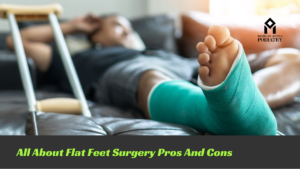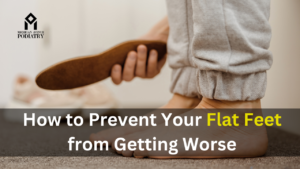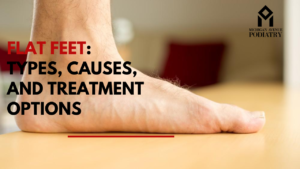Understanding your foot type is essential for choosing the right footwear, preventing injuries, and addressing any potential issues. High arches and flat feet are two common foot types, each with unique characteristics and implications for overall foot health. This comprehensive guide will help you determine whether you have high arches or flat feet and provide insights into managing each condition effectively.
Introduction to Foot Arches
The arch of your foot plays a critical role in absorbing shock and providing balance. There are three primary arch types: normal arches, high arches (pes cavus), and flat feet (pes planus). Identifying your arch type can help you choose appropriate footwear, avoid discomfort, and enhance your overall foot health.
Understanding High Arches
High arches are characterized by an excessive elevation of the arch, creating a significant gap between the foot and the ground. This condition can lead to several issues, including poor shock absorption, increased pressure on the heel and ball of the foot, and a higher risk of ankle sprains. People with high arches may also experience calluses, corns, and pain in the feet, knees, and lower back.
Key Characteristics of High Arches:
- Noticeable Arch Elevation: When standing, the arch appears significantly higher than normal, creating a pronounced gap between the foot and the ground.
- Increased Pressure Points: Pressure is concentrated on the heel and ball of the foot, often leading to calluses and pain in these areas.
- Limited Shock Absorption: High arches do not absorb shock effectively, resulting in discomfort during activities such as running or jumping.
- Foot Pain: Commonly experienced in the heel, ball of the foot, and even in the knees and lower back due to altered biomechanics.
Understanding Flat Feet
Flat feet occur when the arches of the feet collapse, causing the entire sole to come into contact with the ground. This condition can lead to overpronation, where the foot rolls inward excessively during walking or running. Flat feet can cause a variety of issues, including foot pain, ankle instability, and problems with the knees, hips, and lower back.
Key Characteristics of Flat Feet:
- Minimal or No Arch: The arch is either very low or nonexistent, causing the entire sole to touch the ground.
- Overpronation: The foot rolls inward excessively during movement, which can lead to instability and discomfort.
- Foot and Lower Body Pain: Flat feet can contribute to pain in the feet, ankles, knees, hips, and lower back due to altered alignment and biomechanics.
- Swelling: Swelling along the inner side of the foot and ankle is common, especially after prolonged activity.
How to Determine Your Foot Arch Type
Identifying your foot arch type can be done through several simple methods. Here are three effective techniques:
1. The Wet Test
The wet test is a straightforward method to determine your arch type at home. Here’s how to perform it:
- Prepare Your Feet: Wet the soles of your feet with water.
- Make an Imprint: Stand on a piece of cardboard or a surface where you can see your footprint clearly.
- Analyze the Imprint: Compare your footprint to the following patterns:
- Normal Arch: A moderate curve along the inside of the foot with a distinct heel and forefoot connection.
- High Arch: A narrow footprint with a very thin or non-existent connection between the heel and forefoot.
- Flat Foot: A nearly complete footprint with little to no inward curve along the inside of the foot.
2. Visual Inspection
A visual inspection of your feet can also provide clues about your arch type:
- Sit and Examine: Sit down and place one foot on the opposite knee to get a clear view of your arch.
- Check the Curve: Observe the curve of your arch. High arches will have a pronounced upward curve, while flat feet will have little to no curve.
3. The Shoe Test
The wear pattern on your shoes can offer insights into your arch type:
- Inspect Your Shoes: Look at the soles of your most frequently worn shoes.
- Analyze Wear Patterns:
- Normal Arch: Wear is typically centered on the ball of the foot and heel.
- High Arch: Wear is concentrated on the outer edge of the shoe.
- Flat Foot: Wear is more pronounced along the inside edge of the shoe.
Managing High Arches and Flat Feet
Knowing your arch type is the first step toward effective management. Here are some strategies for dealing with high arches and flat feet:
For High Arches
- Choose Appropriate Footwear: Look for shoes with good cushioning and arch support to help absorb shock and distribute pressure evenly.
- Use Orthotics: Custom or over-the-counter orthotic inserts can provide additional support and comfort.
- Perform Strengthening Exercises: Exercises such as calf stretches, toe curls, and arch lifts can strengthen the muscles and improve foot stability.
- Stretch Regularly: Stretching the Achilles tendon and plantar fascia can reduce tension and pain.
For Flat Feet
- Wear Supportive Shoes: Opt for shoes with good arch support and a firm heel counter to prevent overpronation.
- Use Orthotics: Arch supports and custom orthotics can help correct alignment and reduce pain.
- Strengthen Foot Muscles: Exercises such as heel raises, toe curls, and picking up objects with your toes can strengthen the muscles that support the arch.
- Stretch the Calves: Tight calf muscles can contribute to flat feet. Regular stretching can alleviate some of the discomfort.
Importance of Professional Assessment
While these methods can help you determine your arch type, seeking professional assessment is advisable, especially if you experience persistent pain or discomfort. A podiatrist or orthopedic specialist can provide a comprehensive evaluation and personalized recommendations. They can also offer custom orthotics, physical therapy, and other treatments tailored to your specific needs.
Conclusion
Understanding whether you have high arches or flat feet is essential for maintaining optimal foot health. By using simple methods like the wet test, visual inspection, and shoe analysis, you can accurately determine your arch type. Once identified, adopting appropriate footwear, using orthotics, and performing targeted exercises can help manage and mitigate any associated issues. Prioritizing foot health not only enhances comfort but also prevents long-term complications, ensuring you remain active and pain-free.
Remember, if you experience persistent pain or discomfort, it is advisable to consult a healthcare professional for a comprehensive evaluation and personalized treatment plan. With proper care and attention, you can keep your feet healthy and functional, supporting your overall well-being.



